From the dense rainforests and volcanoes in the southwest to the remote, rolling plains abundant in wildlife in the far north, Uganda’s ecological diversity is nothing short of incredible. Nomad Alicia spots tree-climbing lions and mountain gorillas on an epic road trip around the country.
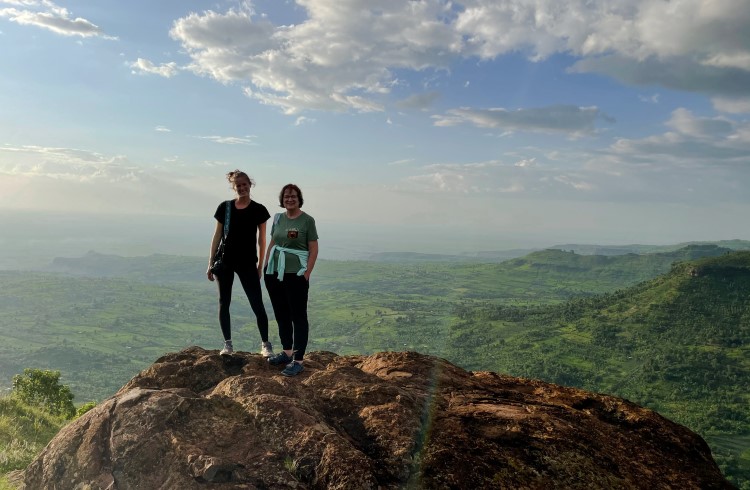 Photo © Alicia Erickson
Photo © Alicia Erickson
I have been East Africa-based intermittently for the past decade, returning to Uganda time and again over the years. On my most recent trip, my mom joined me on a two-week road trip, traversing the wild landscapes of one of my favorite countries.
- Caves, mountains, and coffee near Sipi Falls
- Game drives at Kidepo National Park
- Murchison Falls and the Nile
- Uganda’s Crater Lakes
- Tree-climbing lions at Queen Elizabeth National Park
- Gorilla tracking in Bwindi Impenetrable Forest
- Trip notes
Caves, mountains, and coffee at Sipi Falls
We arrived in Uganda on a rainy, cool morning, bleary-eyed after a short red-eye flight from Rwanda. Gerald, our driver for the next two weeks, picked us up from Entebbe Airport and we headed east towards Sipi Falls, a mountainous region a six to seven-hour drive from Entebbe. We drove through rich farmland, climbing into lush hills as the temperature steadily dropped.
On our first evening, our local guide, Juma, took us on a short hike through banana fields and across plateaus with view of peaks in Elgon National Park. I stood overlooking green slopes cast in the golden shadows of the setting sun, mesmerized by the beauty of a region known as the “land of champions” because of its reputation as home to a number of world-champion runners.
The next morning, we woke to the sound of a rushing river and a private view of Sipi Falls from our cottage, and hiked up to caves beneath the waterfalls. “Caves are very important in local culture here,” Juma explained. “When parents want to name their children, they bring them to the caves because ancestral spirits are thought to be present in them. They place a nail on the baby’s head and call out ancestors’ names—a grandparent or great-grandparent. If the nail falls, they will continue calling names. When the nail stands still, the parents know that this is their child’s name.” Juma led the way further into the hills, stopping to point out plants and flowers with medicinal properties. The hike peaked at the third and grandest of the falls, where we cooled off in the spray. In the afternoon, we roasted coffee beans over a fire and ground them by hand, sampling the beverage that the Sipi Falls region is renowned for.
Game drives at Kidepo National Park
From Sipi Falls, Gerald took us to the northernmost reaches of Uganda, a region that had long held my fascination. Situated along Uganda’s borders with South Sudan and Kenya, Kidepo National Park is one of the last unspoiled wildlife reserves in the country. Although many choose to fly to the region to avoid the arduous drive along pothole-ridden dirt roads, the drive was one of my favorite parts of the journey. For hours, I was mesmerized by the passing scenery as green mountains opened into sunflower farms, which eventually flattened out into the arid Karamoja region dotted with small Karamojong settlements and young boys herding cattle.
As we entered Kidepo, the rolling hills dipped into the pale green valley, a sign of the recent rainy season. Surrounding the expansive park are a series of mountain ranges that fade to a pale blue across the border into South Sudan. Once almost entirely inaccessible due to conflict along the Sudanese border and hostilities rampant in the Karamojong region, Kidepo opened up to tourism around 2008. With only a handful of accommodation options, Kidepo has yet to be tainted by the curse of over-tourism.
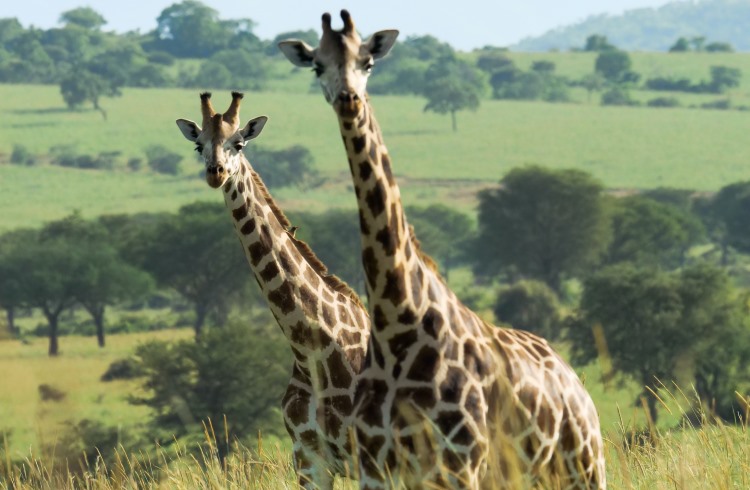
During our days in Kidepo, we went on bush walks and game drives, watching hundreds of buffalos roaming through the park, spotting a cheetah hunting in a nearby field, and getting stuck behind a family of elephants crossing the road to drink water. Each day, zebra, warthogs, and waterbucks came to the watering hole near the breakfast area of our lodge, which blended seamlessly into the wild boundaries of Kidepo.
Murchison Falls and the Nile
Several years ago, when I first visited Murchison Falls, I was enraptured by the roar of the waterfall and the wildlife peacefully roaming through the grassy stretches along the Nile River. Six years on, the area began to deteriorate as a result of over tourism and impending oil drilling. Tarmac roads now extend through the park and some of the interior is being torn up for drilling, detracting from the splendor that once enchanted me.
Nonetheless, Murchison’s wildlife is still abundant. We marveled at large families of Rothschild giraffes grazing on branches dangling from tall trees. The long-faced Jackson’s hartebeest, elegant waterbuck, and Ugandan kob roamed through the grassy plains, while herds of tusked elephants dominated the landscape. Thanks to Gerald’s careful eye, we spotted a leopard and her young cub napping in the branches of a tree, and watched a lioness laying contentedly in the grass beneath an acacia tree. Later, we boarded a small boat and cruised along the Nile as hippos by the dozen spouted water. Our captain pulled into swampy lagoons where crocodiles sunbathed on the riverbanks. Murchison Falls, considered to be the strongest falls in the world, roared more loudly than ever, soaking us with its spray.
Uganda’s Crater Lakes
The drive from northeastern Uganda down to the southwest near the Rwandan border is nothing short of a journey. The crater lakes region, abundant in primates and birdlife, extends from Fort Portal to Queen Elizabeth and is one of the best ways to break up the trip. I stepped from the car to find the blue waters of Kyaninga Lake deep within a crater, surrounded by green volcanic peaks. To reach the lake, we walked along wooden bridges suspended among the trees and down through a tangle of forest where black colobus monkeys sat perched on leafy branches. We dove in and floated in the quiet waters, before walking up and around the rim of the crater, watching the sunset over the lake.
Tree-climbing lions at Queen Elizabeth National Park
After a much too short break at Kyaninga, we continued our drive south to Queen Elizabeth National Park. There are two sections in the park: Kazinga Channel in the north and Ishasha in the south. The open savannah in the north is spectacularly beautiful, although feels somewhat depleted in wildlife. Despite the noticeable absence of zebra and giraffe, we still found leopards sleeping in the trees.

Crossing to the south, we drove over Kyambura Gorge, overlooking a dense, green forest. And in Ishasha, we spotted just what we had come for: the fabled tree-climbing lions. Lazily perched upon the branches of a fig tree were a mom and young cub deep in an afternoon nap. Despite our fortunate sighting, recent years have witnessed increased poaching in Queen Elizabeth, targeting the lion population.
By nightfall, we found ourselves in a quiet camp on the Ishasha River. The gargled roar of lions echoed into the night. Come morning, we watched a pair of crested cranes slowly walk through the empty fields beneath the slow drizzle of rain.
Gorilla tracking in Bwindi Impenetrable Forest
After a 10-hour drive, bumping along muddy roads that wound past emerald-green tea plantations on sloped mountainsides, we reached our final destination in Nkuringo village near Bwindi Impenetrable Forest. Bwindi, situated in the southwestern corner of Uganda on the borders with Rwanda and the DRC, is vast, with four different entrances. Although it was the most remote section of the park, we chose to stay in the damp, misty southern region, high in the clouds and characterized by volcanoes and the culture of Batwa Pygmy communities.
The main draw to the region is mountain gorilla tracking in Bwindi, an adventure that can only be taken in the rainforests of Uganda, Rwanda, and the DRC. Due to Uganda’s drastically lower cost of gorilla permits than Rwanda’s (even cheaper at the moment during the pandemic at a discounted cost of USD $400), we chose to see the gorillas here. On our first full day in the region, we drove to the Rushaga sector of Bwindi. My mom and I were assigned to the Nshongi gorilla family. The path was muddy from fresh rains and our boots sank deep into the mud as we walked along the Nshongi River.
Eventually we crossed the river and ascended steep terrain, walking through tangled vines while our guide used a machete to hack away branches. After about two hours, we heard a distinct rustle and looked up to find two young gorillas swinging from the branches. Deeper into the vines, my eye caught the silver fur of the silverback male who was picking leaves and stuffing them into his mouth. Over the course of an hour, we followed the Nshongi family up and down the slopes of the mountain, as the adolescents swung from branches and babies clung to their mothers’ chests.
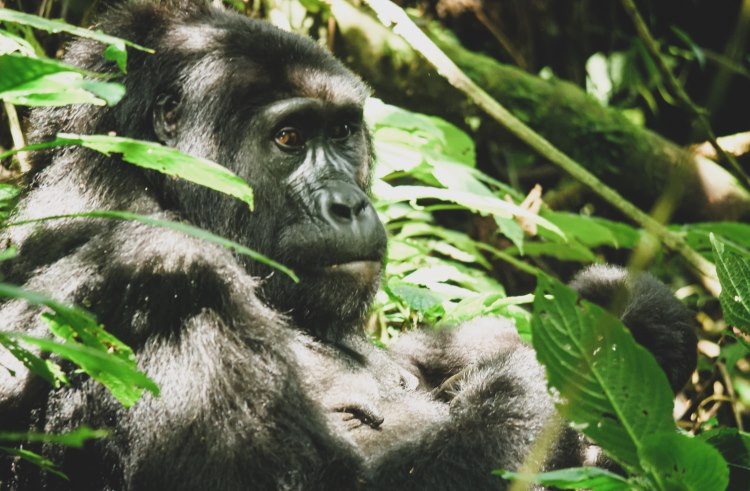
A light rain started as we began our precarious trek down the mountainside and back into civilization. Exhausted from the trek, we warmed up in front of a cozy fireplace at our lodge for our final day. We reminisced over the great lengths we had traveled over the past two weeks, in awe of the natural beauty, rich cultural heritage, and unrivaled hospitality of Uganda.
Trip notes
The dry seasons are roughly June-October and January-March. Trekking and wildlife viewing are easier during dry seasons, although the terrain is lush and green during the rainy months. To get to the national parks and remote regions, it is best to have your own car, whether you self-drive or hire a driver. A 4x4 is recommended to navigate some very challenging terrain and roads. Hiking boots, sturdy walking sandals, lightweight clothing, layers, and rain gear are necessary to accommodate for the varying climates across Uganda.
During peak season, it is advised to book gorilla permits well in advance, but during the pandemic with less demand, it’s possible to book only a week or two before. Lifetime Safaris, who arranged our car and driver, also booked our permits. It’s not necessary to have a tourist visa before booking a permit, although visas are required for entry into Uganda and are no longer available on arrival. Lodges will also book permits if needed. I booked the accommodation independently, but Lifetime Safaris also was able to do that.
Related articles
Simple and flexible travel insurance
You can buy at home or while traveling, and claim online from anywhere in the world. With 150+ adventure activities covered and 24/7 emergency assistance.
Get a quote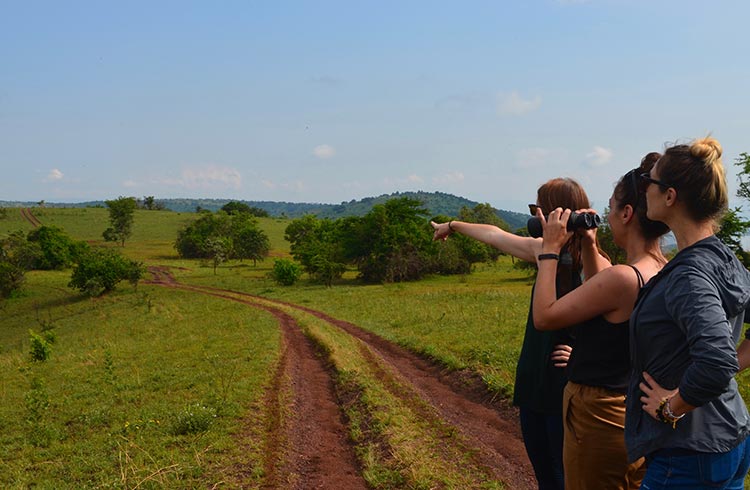
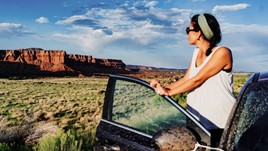

No Comments